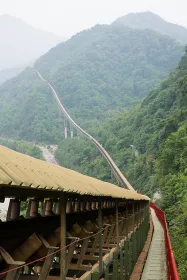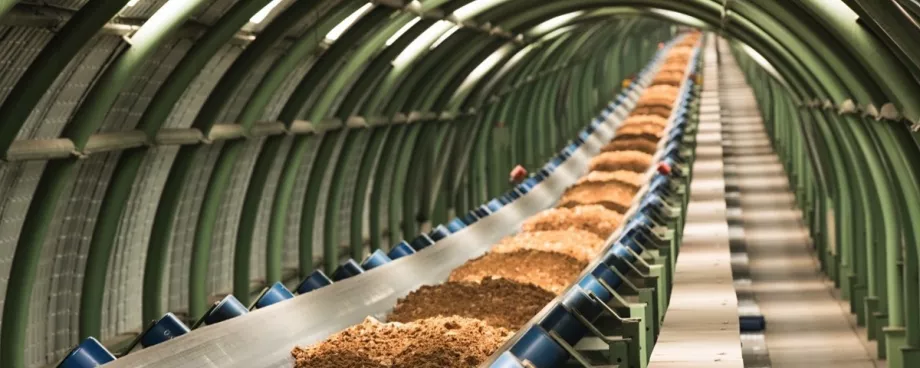
Companies often choose trucks to transport limestone, coal ores and other raw materials as efficiently as possible to the factory and from there to the port, sometimes over distances spanning several kilometres. Most of the time, the vehicles drive on public roads, which are not always well-paved. And as the route can go through hilly areas and nature reserves, across rivers and instable grounds, the trip often includes detours which costs time and money. If it goes through populated areas, it can be particularly taxing for local residents. The more raw materials are transported, the more trips are necessary. These factors motivate companies to take a closer look at the alternatives. BEUMER Group offers open troughed belt conveyors and closed Pipe Conveyors for these scenarios. But will the investment pay off? “That depends on the particular application,” says Richard Munson. He has been with BEUMER Group in Kansas City, Missouri, since 2010 where he manages the development and sales of conveying systems for the energy, cement and mining industries and port terminals. “Companies should carry out a profitability evaluation beforehand,” he advises.
An economic Evaluation pays off
There are different methods to run an economic evaluation, including the net present value method, which is a type of profitability calculation. “Simply put, it means that all future income is discounted to time zero and compared, including the initial investment,” explains Munson. This method uses a calculation interest rate that reflects the best available alternative investment. The user receives a capital value, also called net present value or NPV. If this value is positive, it means that the company will make a profit with the investment.

“Another option is cashflow analysis. It estimates the surplus that remains when deducting expenses from earnings,” Munson explains. Based on the annual difference of the total operational costs between conveying and trucking, the user calculates if investing in a conveying system will pay off. Different variables are required to exactly evaluate both transport options, for example the transport costs per ton, the material volume that needs to be moved within a set period of time, and also the specific investment cost and tax depreciation plan. “A comparison of conveying and trucking in a time diagram results in the break-even point,” explains the BEUMER expert.
Cost Comparison

Depending on the topography, length and power consumption, costs for conventional conveying systems average between EUR 1,000 and 3,000 per metre. More costs are added for the construction, supply and the mechanical and electrical installation. Complex construction work is also often necessary. This makes the initial investment in a conveying system fairly high. “The operational costs however are considerably lower than with the use of trucks,” reports Munson. “The costs for the vehicles also include the labour input, vehicle depreciation, maintenance, repair, fuel and street maintenance for example. And oftentimes there are additional, more difficult to identify charges.”
To operate a conventional conveying system, the typical costs for transporting one ton of material amounts to 20 Cents, with trucks the costs are roughly three Euro. “The biggest variable for the vehicles is the number of trips per hour,” says Munson. In case of short and direct routes, this ranks better than for long routes, where detours are necessary to get to the destination.” Troughed belt conveyors and closed Pipe Conveyors lead directly to the destination. They can also be adapted to the specific surroundings.







